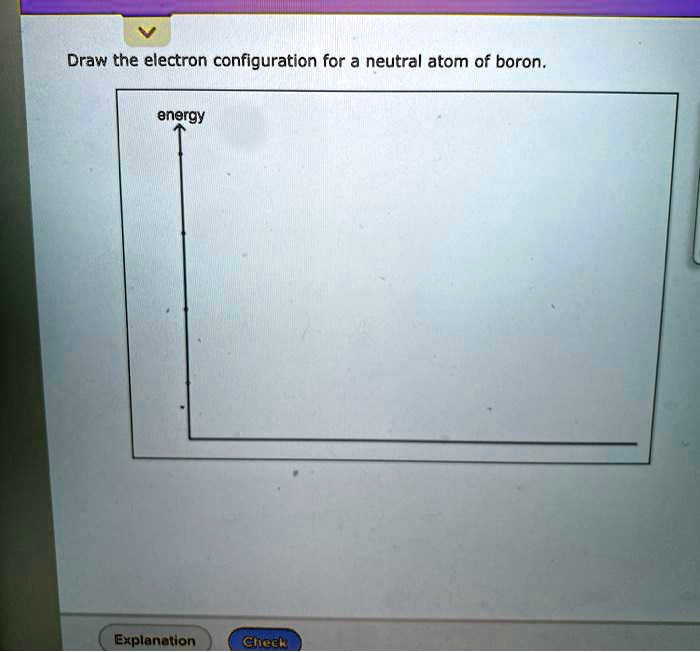Draw the electron configuration for a neutral atom of boron: Explanation check

The Correct Answer and Explanation is:
The correct electron configuration for a neutral atom of boron is:
1s² 2s² 2p¹
Boron has an atomic number of 5, which means a neutral boron atom contains 5 protons and 5 electrons. The electron configuration describes how these electrons are distributed among the atom’s orbitals, which are regions around the nucleus where electrons are most likely to be found.
According to the Aufbau principle, electrons occupy the lowest energy orbitals first before filling higher energy levels. The first two electrons enter the 1s orbital, which is the lowest energy level. This gives the term 1s². Once the 1s orbital is filled, the next two electrons fill the 2s orbital, giving 2s². This leaves one remaining electron, which enters the 2p orbital, giving 2p¹. The 2p subshell can hold up to six electrons, but in boron it contains just one.
Hund’s rule tells us that electrons will fill degenerate orbitals singly before pairing up. Since the 2p level has three equal-energy orbitals, the single electron in boron will occupy one of these alone rather than pairing up.
This distribution allows boron to follow the Pauli exclusion principle, which states that no two electrons in the same atom can have identical quantum numbers. Each orbital can hold a maximum of two electrons with opposite spins.
Graphically, this configuration would be represented with upward and downward arrows in the 1s and 2s orbitals, and a single upward arrow in one of the 2p orbitals. The spacing and arrow directions illustrate how electron spins are paired and how unpaired electrons occupy orbitals individually when possible.
Understanding this configuration helps explain boron’s chemical properties, such as its tendency to form three covalent bonds and its placement in group 13 of the periodic table.
